These scientists were also institution builders
-
- from Shaastra :: vol 01 issue 04 :: Jul - Aug 2022
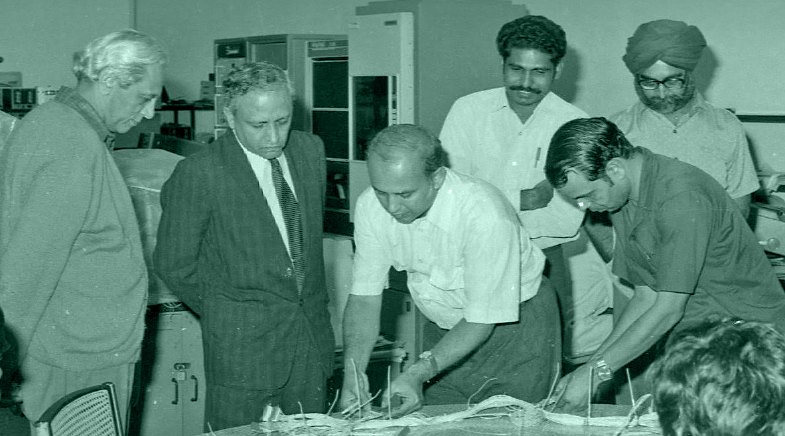
Scientists with remarkable vision and administrative skills created and led institutions through tough times.
Homi Bhabha, Meghnad Saha and S.S. Bhatnagar had established themselves as science leaders before independence. Bhabha, the youngest of them, was marked as a future science leader when he set up the Tata Institute of Fundamental Research (TIFR) in 1945. He had the right qualities: a global reputation, a network that came with it, a pleasant temperament, and a broad vision for Indian science. He had the support of the political establishment after independence, and set about implementing his vision for the country.
Bhabha stands tall as the scientist with the biggest influence on the course of scientific research in independent India. Others had done their jobs well before independence. C.V. Raman had brought a Nobel Prize to the country. Saha, widely considered in the same class as Raman, set up the physics department at Allahabad University, Institute of Nuclear Physics in Calcutta and the Indian National Science Academy. Ramaswamy Mudaliar worked with S.S. Bhatnagar to establish the Council of Scientific and Industrial Research (CSIR) in 1940, starting with five national laboratories.
Bhabha continued from where they left off and set the course for two of the biggest programmes: atomic energy and space. He died in 1966, but the momentum that he generated for institution-building continued. Five IITs were established starting 1959. CSIR slowly grew into the largest chain of civilian laboratories in the world. The Indian Council of Agricultural Research and the Indian Council of Medical Research, set up before independence, grew rapidly after 1947. India, however, was late in setting up funding mechanisms for research. The Department of Science and Technology was set up in 1971 and the Department of Biotechnology in 1986. By then, institution-building had slowed down. It picked up pace for a decade in the new millennium.
Leadership had played a major role through the 75 years of building science in independent India. Scientists with remarkable vision and administrative skill created and led institutions through fund shortages, bureaucratic hurdles, cultural tugs-of-war and one-upmanship. Most of the leaders were accomplished scientists, but their impact was felt more forcefully through their leadership. All the scientists on this list were at the right place at the right time. They were also remarkable leaders and institution builders.
HOMI J. BHABHA
Born into a wealthy Parsi family in Bombay, Homi Bhabha had made his ambitions clear while he was a student at Cambridge. Writing to his father on why he was switching from engineering to physics, Bhabha mentioned that he expected to do great things as a physicist. He had set the tone while in England, by discovering how cosmic ray particles behaved as they moved through the upper atmosphere towards the Earth, a phenomenon now called Bhabha scattering. But the Second World War caught him unawares while on holiday in India, and he had to change his plans and build a career in the country.
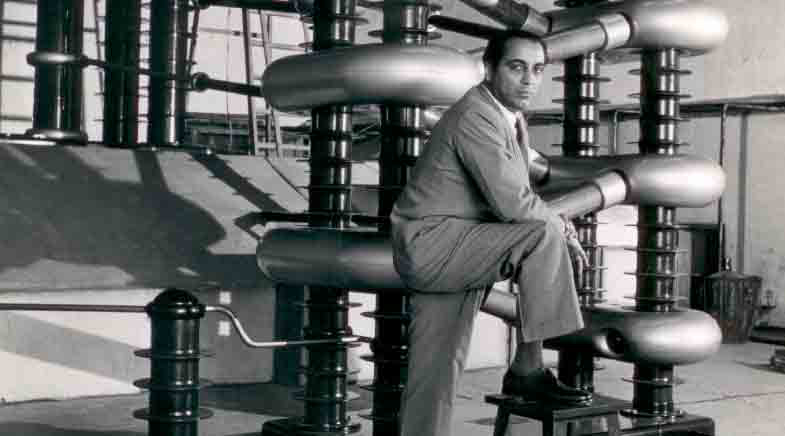
He set up TIFR — managing to raise the money from the Tata Trust — after he realised that India needed a modern institute where scientists had the freedom and facilities matching those of the West. Not all physicists agreed with him; some were keen on improving the existing institutions rather than building new ones. Bhabha's ideas found favour with the political leadership, and TIFR developed inside the Atomic Energy Commission. The space programme also grew within the Atomic Energy Commission, till a separate Space Commission was created in 1972.
Bhabha died in an air crash in 1966. By then, he had given enough momentum to science in India.
VIKRAM SARABHAI
After finishing his PhD in cosmic ray physics from Cambridge in 1945, Vikram Sarabhai - born into a rich Gujarati business family - returned to India. He founded the Physical Research Laboratory, setting it up in his own large house, and appointing K.R. Ramanathan, C.V. Raman's student, as its head. As he led his own family business, Sarabhai helped set up several institutions and associations, including the Indian Institute of Management Ahmedabad. In 1961, working closely with Homi Bhabha, he set up the Indian National Committee for Space Research, under the Atomic Energy Commission, beginning work by launching rockets at Thumba near Trivandrum.
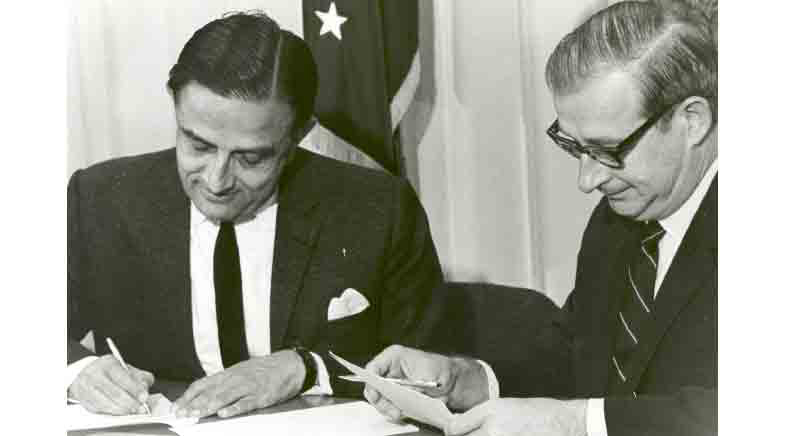
As the programme grew, Sarabhai became an inspiration for young scientists. His temperament was different from Bhabha's. While Bhabha kept a distance from the scientists, Sarabhai mingled freely with them. He worked hard and sometimes partied hard, late into the night. He had supreme confidence in the ability of the young engineers - who had never seen rockets or satellites - to build a space programme. Sarabhai kept alive the atomic energy and space programmes after Bhabha's death, but died of a heart attack in a Trivandrum hotel at the age of 52.
U.R. RAO
U.R. Rao was working on the Pioneer and Explorer spacecraft at the University of Texas when he was called by Vikram Sarabhai to join the Physical Research Laboratory. As the only person in India who had worked on a satellite, it was natural for Rao to lead the satellite programme. Like Sarabhai and Homi Bhabha, Rao was a scientist at heart and would have been in academic research if not for the space programme. After Sarabhai died, Rao moved the satellite teams from Ahmedabad and Trivandrum to Peenya, a new township outside Bangalore. There they built a high-tech satellite laboratory inside leaky sheds with asbestos roofs.
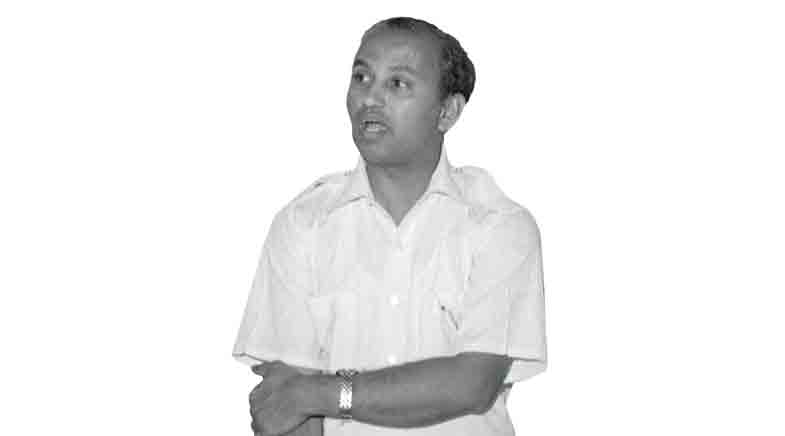
Rao led the development of satellites such as Aryabhata, Bhaskara, Rohini, APPLE and INSAT. Aryabhata was developed in a record two-and-a-half years. Rao fostered a culture of openness at Peenya, which expanded into a full-fledged centre in Bangalore. He took over from Satish Dhawan as ISRO Chairman, and started key programmes such as the PSLV and GSLV, the cryogenic engine and communication and remote sensing satellites.
M.G.K. MENON
M.G.K. Menon had made a name for himself as a physicist before he moved to TIFR in 1955 at the age of 27. Hand-picked by Homi Bhabha, he started handling TIFR administration in the early 1960s, well before Bhabha's death. Menon went on to become the Director of TIFR at the age of 38. Bhabha's unexpected death had thrust Menon into this role. Over the next two decades, even after he retired as the Director, Menon had a hand in many major programmes in TIFR, and a few outside it: cosmic ray studies with balloons, the first experiment in the world to detect neutrino, and the proton decay experiment.
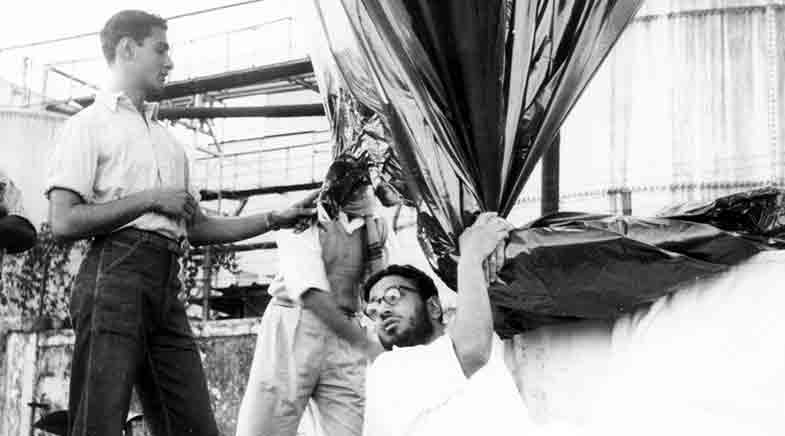
Menon supported Govind Swarup in building two large telescopes: one at Ooty and the other near Pune. Similarly, he helped Obaid Siddiqi move outside TIFR and set up a centre for biological sciences in Bangalore. When in the Planning Commission, Menon was the brain behind the Technology Policy Statement of 1983. He headed innumerable committees and influenced the course of research in many areas of science.
SATISH DHAWAN
When Vikram Sarabhai died in 1971, the space programme had just begun to make progress. The Indian Space Research Organisation (ISRO) had been set up, and teams were expanding in the satellite and launch vehicle programmes. ISRO needed a leader to take it forward from where Sarabhai left off. Luckily for ISRO, the government found one in Satish Dhawan.
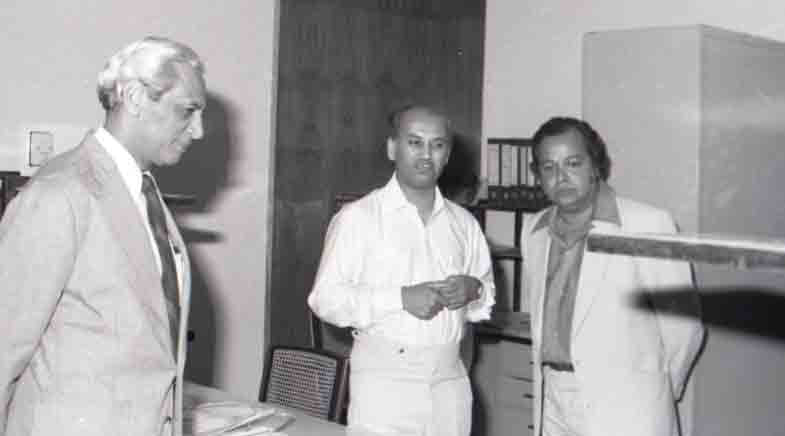
Dhawan was already a name to reckon with at the Indian Institute of Science (IISc). As its Director from 1962, he had created new departments and expanded others. He brought in young faculty by offering jobs to promising young scientists and engineers across the world. He was reluctant to leave the institute, but Prime Minister Indira Gandhi coaxed him by letting him lead both IISc and ISRO.
Dhawan accepted Sarabhai's vision and brought in procedures to ISRO that are followed even now. He led ISRO till 1984, during one of its most difficult periods. By the time Dhawan handed the baton to U.R. Rao, ISRO had built a technology foundation for both launch vehicle and satellite programmes. Like all great leaders, Dhawan accepted responsibility when ISRO missions failed and gave his colleagues the credit when they succeeded.
K. KASTURIRANGAN
K. Kasturirangan was the last in a line of research scientists who went on to head ISRO. He had a PhD in high energy astronomy, working at the Physical Research Laboratory. He had then met Vikram Sarabhai who had trained him in experimental methods in astronomy. Kasturirangan eventually joined the satellite programme and moved to Bangalore, forming a part of the team that designed Aryabhata, India's first satellite. Kasturirangan and U.R. Rao also used the satellite to carry out research and publish papers. Kasturirangan was probably marked as a future top leader early in his career, because he was eased quickly into the directorship at the satellite centre. He succeeded Rao as the Chairman in 1994.
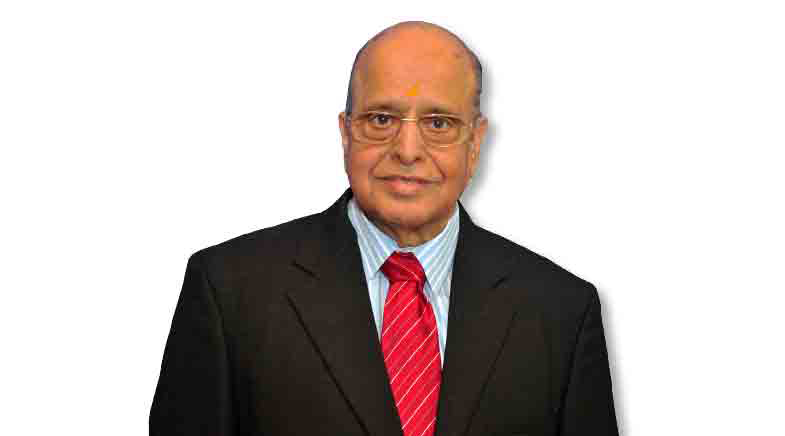
PHOTO: RAJASTHAN UNIVERSITY
ISRO conceived many key programmes during his tenure as the Chairman. These included Chandrayaan-I and Astrosat, originally an X-ray astronomy programme for TIFR that he converted into a space observatory for the entire astronomy community. Kasturirangan, who had an exceptional ability to communicate difficult ideas, had also learned the art of smoothly and tactfully handling tricky situations. After his retirement, he was a member of the Rajya Sabha and the Planning Commission. He later chaired two important committees, one to suggest measures to revive the ecology of the Western Ghats and the other on the National Education Policy.
K. RADHAKRISHNAN
K. Radhakrishnan is unusual among all ISRO leaders because he had studied management in an academic institution. He started his career as an electronics engineer in 1971 at the Space Science and Technology Centre at Trivandrum, where he worked on avionics design, among other projects. After a post-graduate degree in management from the Indian Institute of Management Bangalore, Radhakrishnan got a PhD in 2000 from IIT Kharagpur, for a thesis on the management of Earth observation systems. By then he was the Director of the Indian National Centre for Ocean Information Services in Hyderabad. He became the head of the National Remote Sensing Agency in 2005, the Director of the Vikram Sarabhai Space Centre in 2007 and ISRO Chairman in 2009.
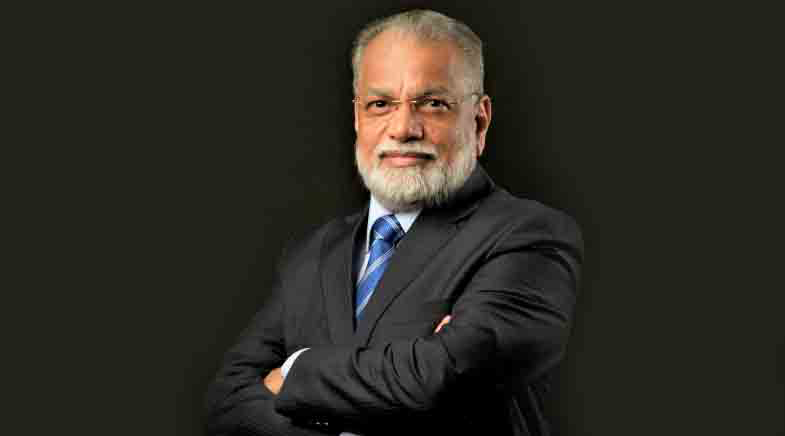
Radhakrishnan brought his professional management skills to ISRO by focusing on people. He created a long-term succession plan for ISRO, and led the organisation through some crises. His tenure is remembered for two achievements: a precisely planned and executed Mars Mission with tight deadlines, and the success of the Geosynchronous Satellite Launch Vehicle (GSLV) with a cryogenic upper stage.
ANNA MANI
It is not easy for a nation to start afresh after two centuries of colonial rule. In science, a new country must build extensive infrastructure before embarking on serious research. This is particularly difficult for research that depends on instrumentation, a field that is dominated by a few rich countries. Lack of equipment was a problem facing Indian scientists after independence. Scarcity forced some to think tangentially and come up with ingenious ways of getting instruments for their work. One of these scientists was Anna Mani.
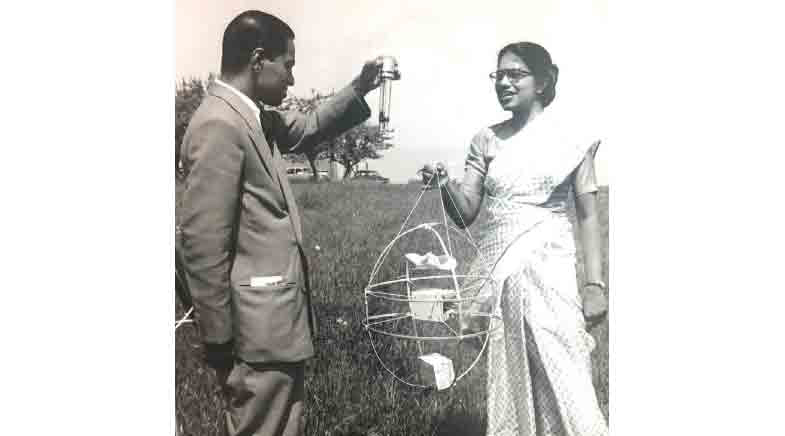
Born in Kerala, Mani had worked under C.V. Raman at IISc after her BSc Honours. She submitted her doctoral dissertation and published five papers, but the university denied her a PhD because she did not have a Master's degree. Mani went to England and worked at the British Meteorological Department, honing her interest in weather instruments. She joined the India Meteorological Department as a meteorologist in 1948, and set about developing instruments in a workshop, which grew into a sophisticated instrumentation laboratory with 120 people working under her. Mani calibrated several instruments and developed standards for nearly 100 of them. She continued such work in solar energy and atmospheric ozone measurements and helped ISRO set up a meteorological observatory. Mani retired from IMD in 1976 as Deputy Director General.
B.V. SREEKANTAN
B.V. Sreekantan had cut his teeth on research on underground cosmic ray experiments at the Kolar Gold Fields, where TIFR subsequently built the world's deepest underground laboratory. He was then working under Homi Bhabha for a PhD. Sreekantan went to the Massachusetts Institute of Technology twice after that, the second time watching the birth of X-ray astronomy. When he returned to TIFR he started an X-ray astronomy programme, which grew into Astrosat, India's first space observatory.
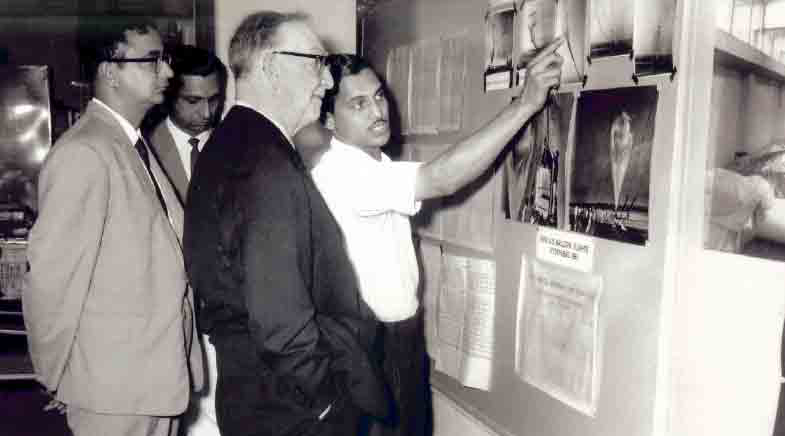
As a student, Sreekantan had learned how to build instruments by scavenging for components from discarded equipment. He continued to practise this, contributing to the development of a large number of instruments in TIFR. As TIFR's Director from 1975 to 1987, he was involved in the creation of several centres, including the National Centre for Radio Astrophysics, Pune, and the National Centre for Biological Sciences, Bangalore. He prodded other scientists to work on large projects that made a major impact on the country. Sreekantan died in 2019, at the age of 94.
ARCOT RAMACHANDRAN
Most people on this list were accomplished scientists or engineers. Arcot Ramachandran was no exception. When he was a Professor at the Indian Institute of Science, he helped establish a school of research on heat transfer. He focused on problems that were relevant to India, and solved many technical issues on the use of lignite as a power generation fuel. Over the years, he gained global recognition for his research.
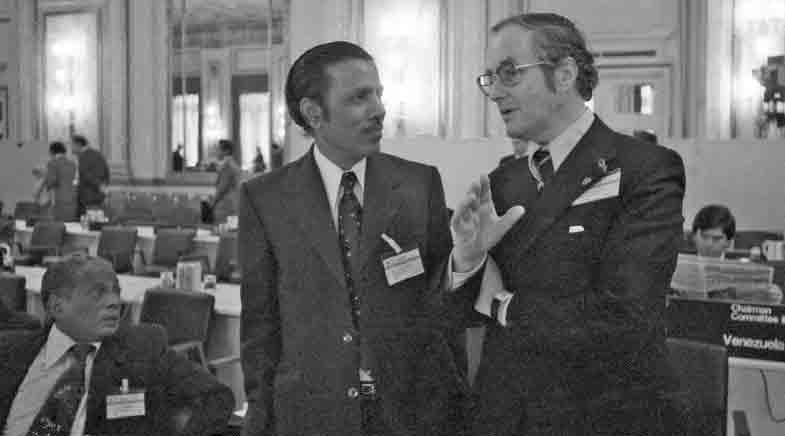
He moved to IIT Madras in 1967 as its second Director. Till then, it was largely a teaching institution. Ramachandran was the first to bring an ethos of research to the institute. He also demolished the hierarchical culture prevalent then, and made himself available to anyone who wanted to approach him. On the other hand, he held the faculty accountable, too, by going around to the labs and asking them questions about the progress of their work. In 1973, Ramachandran became the first Secretary of the Department of Science and Technology, where he got officials to monitor the progress of government-funded projects, probably for the first time. As the Secretary, he started several programmes and new institutes, and brought to the department a similar style of work that made him famous at IIT Madras.
D.S. KOTHARI
D.S. Kothari was among the few early science leaders who had a broad vision for the country, and showed both breadth and depth in their fields and beyond. A physicist at heart, he was influenced by Meghnad Saha and S. Chandrasekhar and made important contributions to quantum statistical mechanics and its applications in astrophysics. He was largely instrumental in setting up Delhi University's Physics Department, which became one of the best in India, bringing quantum mechanics and quantum field theory — requiring advanced mathematical knowledge — to its Master's programme.
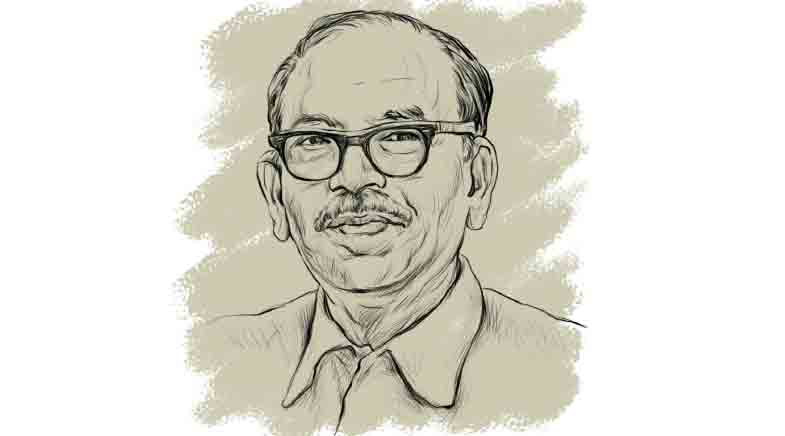
Kothari was appointed Scientific Advisor to the Defence Minister after independence, a post he held till 1961. While internationally known as a physicist, he gained national attention in India after being appointed Chairman of the University Grants Commission, and, in 1964, as the head of the education commission. The Kothari Commission report was a blueprint for the current system of higher education in India.
Y. NAYUDAMMA
By any measure, Y. Nayudamma was a scientist-leader ahead of his time. He wasn't planning to become a scientist; a quirk of fate had got him to study leather technology. Then, he was lucky to be selected by the government in a list of 100 people to be sent abroad for training. Nayudamma moved from the U.K. to the U.S. for a PhD. Instead of continuing in research, he joined a leather unit as a blue-collar worker to gain experience in leather technology. He had a keen interest in understanding and solving social problems, a rare attribute for a scientist then.
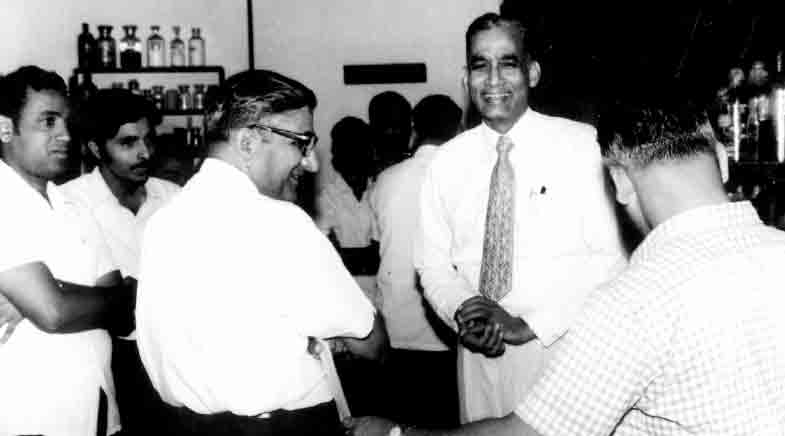
Nayudamma became the Director of the Central Leather Research Institute (CLRI) at 34 and changed the way the lab and the industry worked. Till then, CLRI and leather units seldom worked with each other. Nayudamma went to the leather units and met entrepreneurs and workers, and got them to use CLRI facilities for their business. He organised social gatherings with industry in CLRI and conferences. Nayudamma, who was made the Director General of CSIR in 1971, had a similar impact there. He got a large number of young people from abroad into the organisation. Over the next two decades, even after retirement, he was a big influence on national policy on science.
S. RAMACHANDRAN
S. Ramachandran's research and managerial career was mostly in the private sector. He had studied agriculture science and then got a PhD in biochemistry from the University of Illinois. He joined Hindustan Antibiotics in 1961, where he became the Chief Scientist in 1971. Later, he was appointed the CEO of Bengal Immunity Company in Calcutta. Ramachandran steered this company, which was one of India's vaccine pioneers, through a difficult industrial environment for five years. He was then invited by the government to head the National Biotechnology Board in the Department of Science and Technology (DST). Ramachandran, who realised that biotechnology was too big to be bottled inside DST, conceived the blueprint for a separate department. The Department of Biotechnology was set up in 1986 with Ramachandran as its first Secretary.
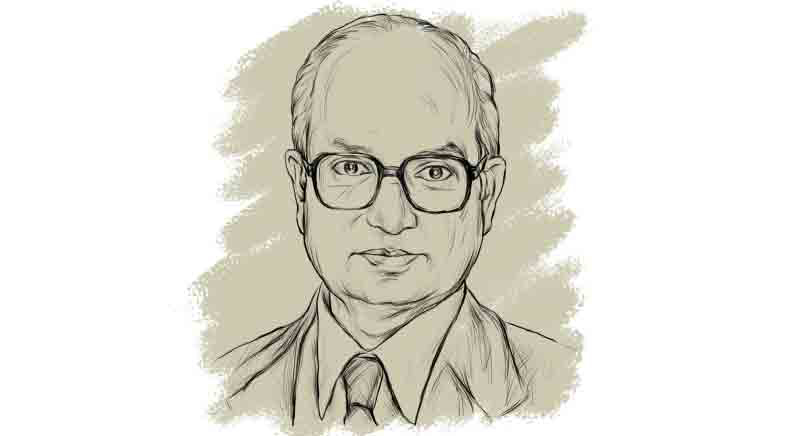
The blueprint for the Department was made largely by Ramachandran himself. As the founder Secretary, Ramachandran had the opportunity to shape DBT according to his own vision. While technocrats struggled to communicate their vision to the political bosses, Ramachandran stood out owing to his practical and articulate nature. He was well-read and knew about the global trends that would shape biotechnology in the future, and set about creating an ecosystem in the country rather than just a government department. He mentored all the DBT employees, including senior directors. He conceived many new programmes for the department, which his officials and future directors had continued to execute long after he retired from the government.
K. VIJAYRAGHAVAN
A chemical engineer, K. VijayRaghavan got interested biology after a project at the All India Institute of Medical Sciences, during which he read an article on drosophila genetics. It prompted him to switch to biology. The article was written by Obaid Siddiqi, who headed the then small biology group at the Tata Institute of Fundamental Research (TIFR). VijayRaghavan went on to earn a PhD from TIFR in developmental biology, went to the California Institute of Technology for a two-year stint as a research fellow, and then came back to TIFR in 1992.
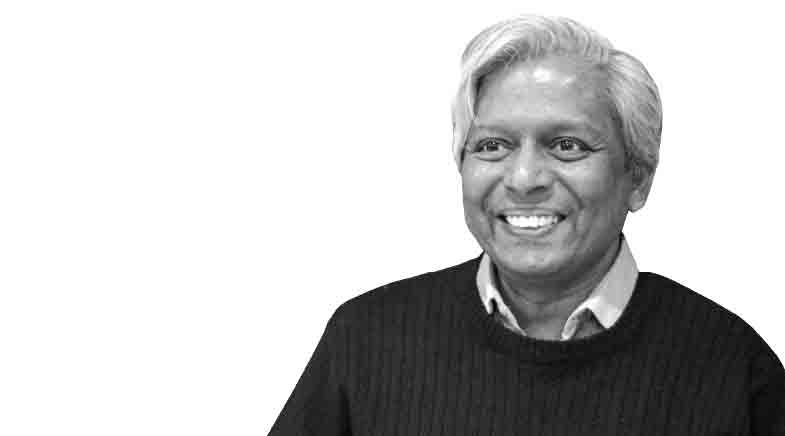
At that time, a part of the biology group at TIFR was moving to Bangalore at a new institution called the National Centre for Biological Sciences (NCBS). Siddiqi was its first Director, and it was supposed to function in the same spirit of TIFR. VijayRaghavan, who played a key role in shaping the framework for the new institute, took over as its Director in 1996. As the NCBS director for the next 13 years, VijayRaghavan shaped an institute with minimum hierarchy, where scientists could blossom without any interference from leadership, often at the cost of his own research. He moved on to Delhi to become Secretary, Department of Biotechnology, and was later the Principal Scientific Advisor to the Prime Minister, but building NBCS remains one of his signature achievements.
A.P.J. ABDUL KALAM
As a young engineer, A.P.J. Abdul Kalam caught the attention of his bosses at the Aeronautical Development Establishment. He designed India's first hovercraft. At ISRO, his work on a rocket-assisted take-off system got him to lead the final stage of the SLV-3 rocket and to become its project manager. After one failure, SLV-3 succeeded and was a milestone in ISRO's history. Kalam was then asked to head a DRDO missile programme, then proceeding at a snail's pace. After a few failures, the missile programme succeeded.
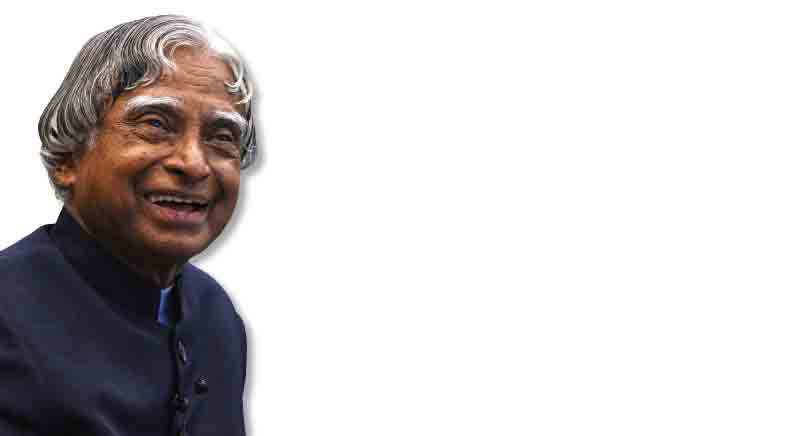
Despite being popular at ISRO — he was often called 'Kalam Iyer' because he was a vegetarian — many scientists were sceptical of his ability to deliver. Kalam might not have understood the equations deeply, but he knew those who did, and also knew how to inspire them to give their best. He could motivate those working under him, but he could also get the best out of those not working under him.
A section of the scientific community never accepted Kalam as one of them, because he did not have a PhD or even a Master's degree. However, he left an imprint few could boast of. He inspired the public and made many proud of India's technical prowess. There were many such intangible achievements of the man who eventually became the People's President.
RAJA RAMANNA
Raja Ramanna was a renaissance man in the true sense of the word. He graduated with two degrees — in physics and music — from the University of Madras. He followed it up with two post-graduate degrees, also in physics and music, from the University of Bombay. His PhD from King's College London was in nuclear physics, and Ramanna joined the Bhabha Atomic Research Centre (BARC) in Bombay as a senior technical staff, rising to become the Chairman of the Atomic Energy Commission (AEC).
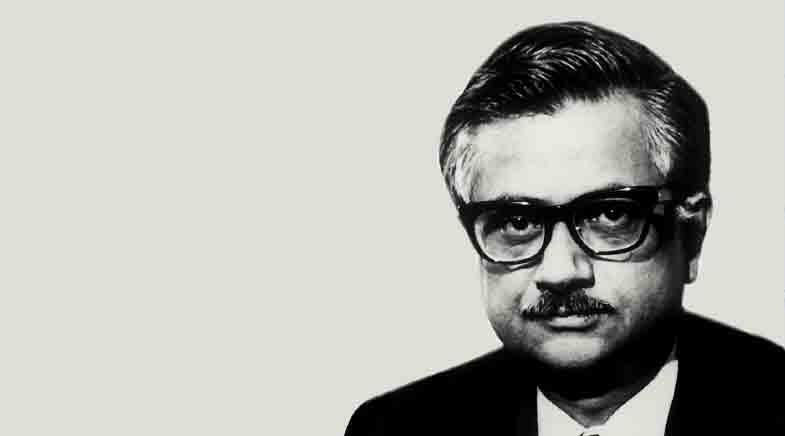
PHOTO: DAE
Raja Ramanna was one of the architects of India's first nuclear test and led the commission with distinction from 1983 to 1987, when the AEC commissioned its fast breeder reactor using a design and fuel developed in India. One of his biggest achievements, however, had come long before he became the Chairman. As the Director of the physics group in 1957, he had started the BARC training school, which almost every scientist in the AEC passed through. He taught them how to work with available resources. His advice to young scientists was this: chase the anomaly. That was the best way to do original research.
SAMIR BRAHMACHARI
Samir Brahmachari was on a sabbatical at Columbia when he saw the excitement with which biologists talked about genomics. Sequencing was in its infancy, but scientists were already contemplating sequencing the human genome. Brahmachari, who worked at the Molecular Biophysics Unit (MBU) of the Indian Institute of Science, returned to IISc, determined to bring the field to India. But it wasn't easy, as there was no institution with the right objectives that could be tweaked to include genomics.
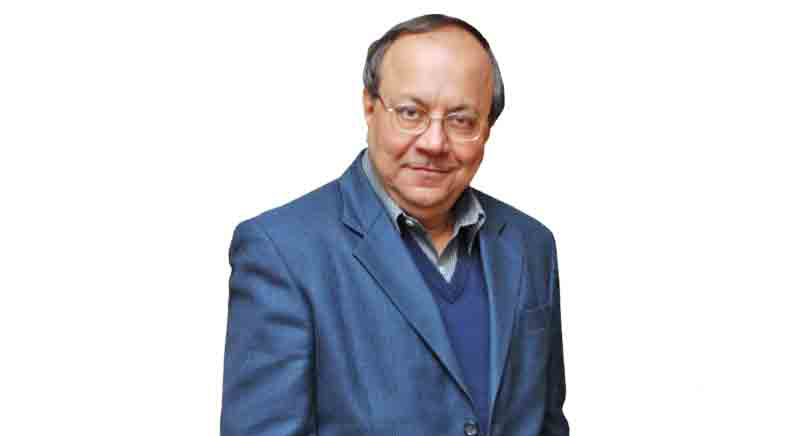
When he could not persuade MBU to start genomics, he decided to set up a foundation. It didn't go far because of the death in 1995 of B.K. Bachhawat, who had promised to be its Chairman. However, Brahmachari was offered the directorship of the Centre for Biochemicals in Delhi. Over the next decade, he converted the centre into a full-fledged institute, and renamed it the Institute of Genomics and Integrative Biology. It was the first genomics programme in the country. In 2006, he took over as Director General of CSIR. In the past two years, since the world has been hit by the pandemic, IGIB has been at the forefront of efforts to understand the genomics of the coronavirus.
V.S. RAMAMURTHY
The Indian scientific establishment considers V.S. Ramamurthy a silent leader, with contributions in a wide range of areas. As a nuclear physicist, he was a key member of the design team that planned and executed the 1974 nuclear test at Pokhran. Ramamurthy worked for 13 years in the atomic energy programme, where he contributed to nuclear fission, thermodynamics of nuclei, and applications of low energy reactions. Later, after joining the Institute of Physics in Bhubaneswar as its Director, he brought a three-megawatt accelerator to the institute. In 1995, Ramamurthy joined the Department of Science and Technology as Secretary.
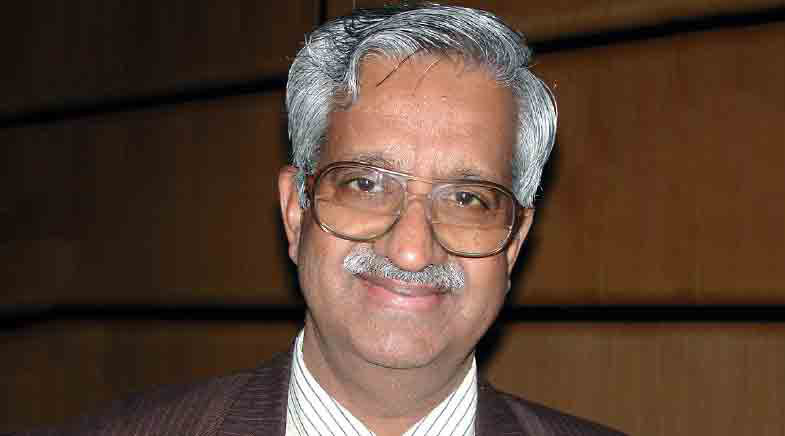
Two previous Secretaries had already laid the foundations of the department, which Ramamurthy expanded by starting several major programmes. One of them was the Kishore Vaigyanik Protsahan Yojana, a scholarship scheme that got tens of thousands of students to study science. Another was the Swarnajayanti fellowship, which gave substantial support to outstanding young scientists. In 2000, he was responsible for starting the Indo-U.S. Forum, which blossomed into a model for scientific cooperation. In between, he had also started programmes for the commercialisation of scientific research.
ANIL KAKODKAR
Anil Kakodkar's professional expertise was on the engineering of reactors, where he had made important technical contributions to the nuclear programme. He was closely involved in India's first nuclear tests and construction of Dhruva, the country's largest research reactor. His signature contribution to the country came after he became the Chairman of the Atomic Energy Commission in 2000. His nine-year stint there is widely recognised as one of the best years of the organisation, in terms of achievements and relationships with other agencies. During this period, Kakodkar also played the leading role in negotiating the Indo-U.S. nuclear deal.
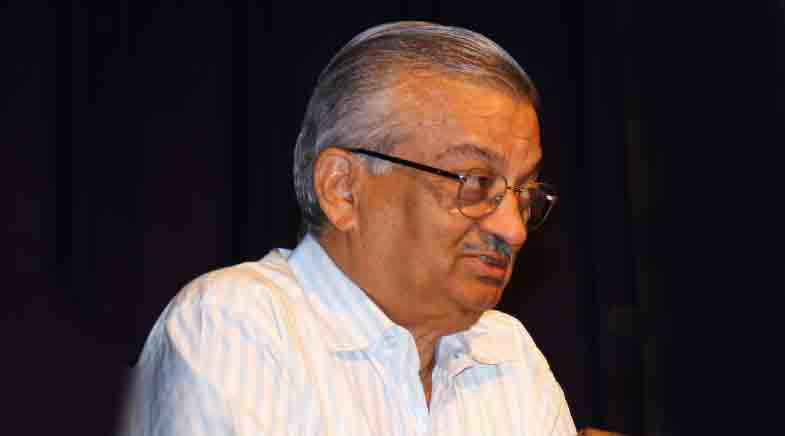
Because India was not a signatory to the Nuclear Non-Proliferation Treaty, the country had trouble obtaining uranium in the open market till the deal was signed. Kakodkar's negotiating skills ensured that the treaty was signed using the right language, safeguarding India's long-term interests. The treaty allowed India to buy uranium for its nuclear reactors. Kakodkar's negotiating skills were respected in the U.S.
See also:
Physicists who made quite a mark
When the chemistry was just right
These engineers foresaw the future
They shaped the development of indigenous technology
Have a
story idea?
Tell us.
Do you have a recent research paper or an idea for a science/technology-themed article that you'd like to tell us about?
GET IN TOUCH














